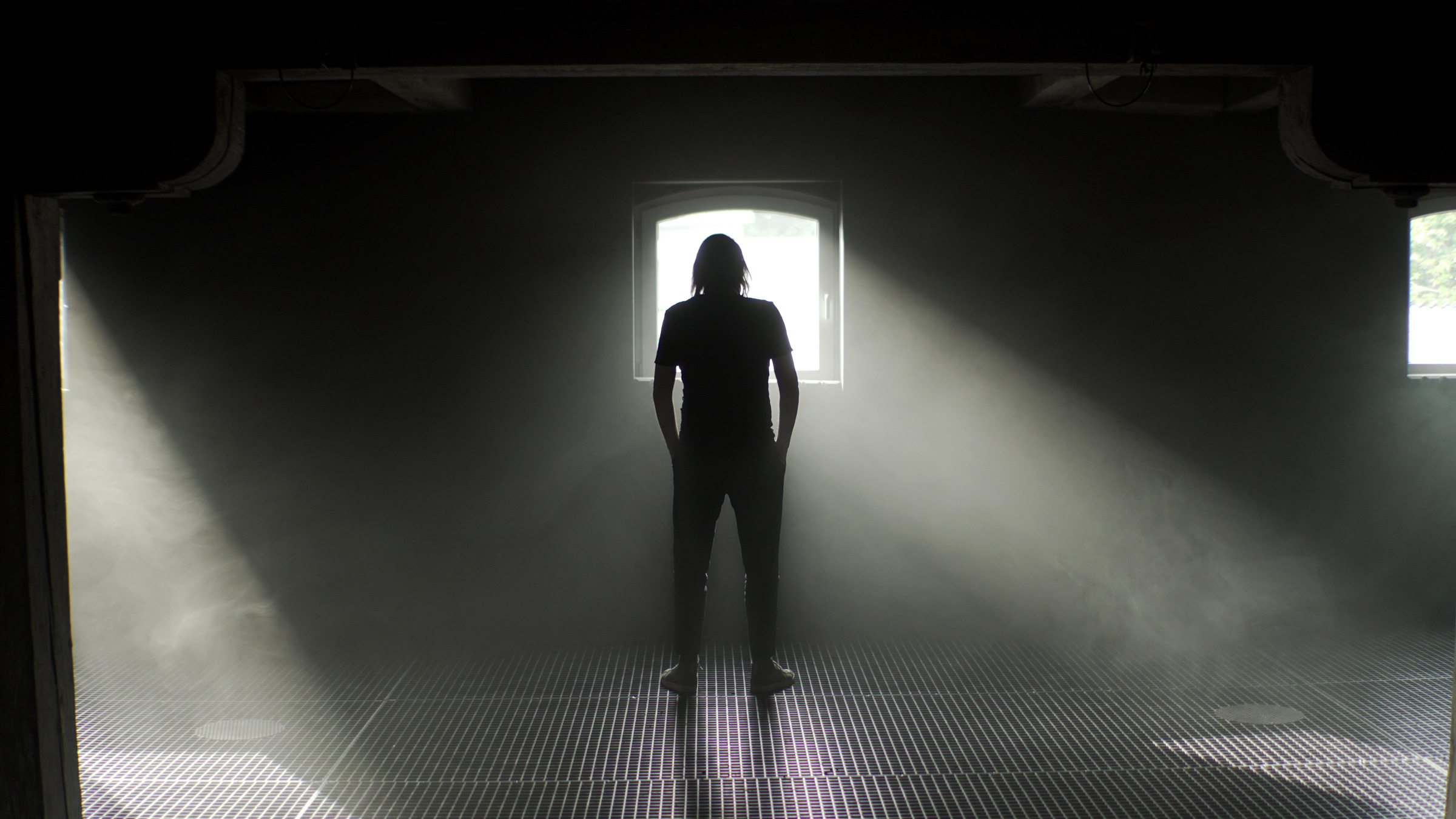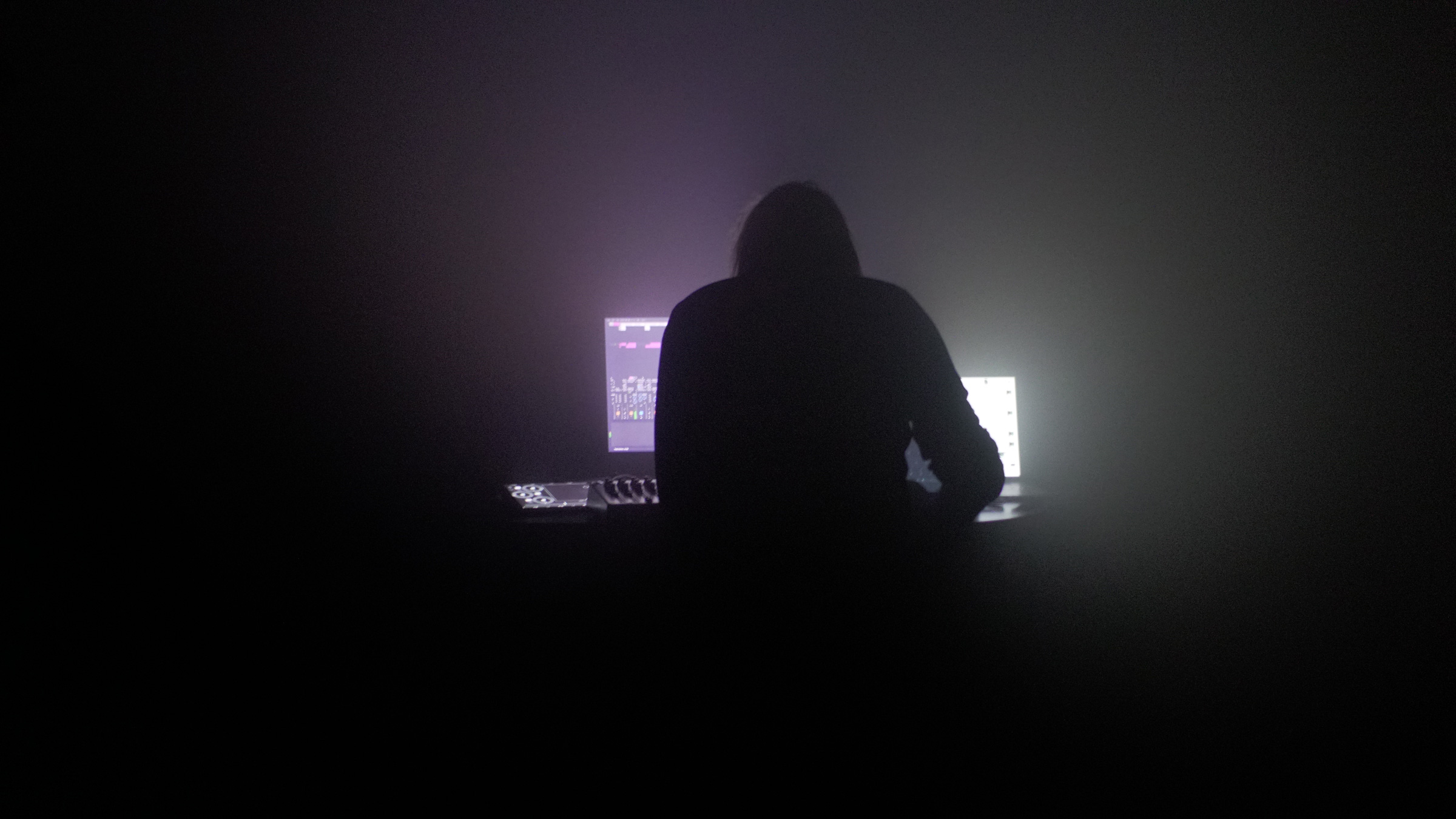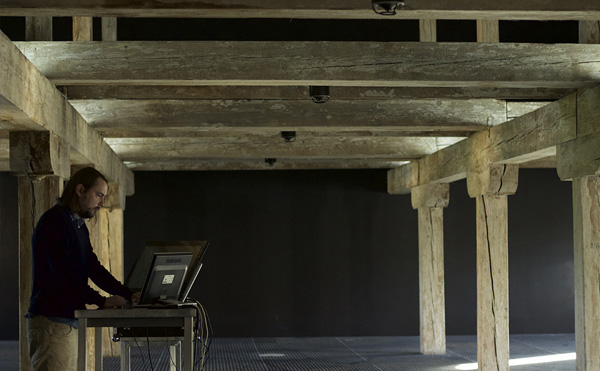Bardo (2018)
Fraction
Eric Raynaud a.k.a Fraction has developed ‘Bardo’ as part of the Spatial Sound Institute’s Artist Residency Programme. ‘Bardo’ is an artistic research project for the creation of an immersive piece at the intersection of sound technology, architecture and psychoacoustics. Of most distinctive influence to the work is the technical study and reproduction of intrinsic sound properties in spaces dedicated to ritual meditation or spiritual practices.
The work involves a research stage at the Spatial Sound Institute on the use of a multi-channel convolution reverb to simulate virtual sound spaces, the development of a suite of specific tools to design the performance, and in parallel the collection of three-dimensional sound impressions in specific spaces, which will feed the technological process.
The project is inspired by the eponymous title, literally ‘interval’, the central subject of the ‘Tibetan Book of the Dead’ (Bardo Thödröl), a Buddhist text written by Padmasambhava in the 8th century and subtitled ‘The great liberation by the listening in intermediate states'. If in the first place the work describes the stages of transition between death and rebirth in a future life, it evokes in a much more general manner, any interval, or intermediate state of consciousness: meditation, dream, trance. By extension, some consider that these states, the Bardo, are spaces of creativity and potential liberation, because they print breaks in routines and daily patterns. In these momentary interstices of total freedom, the perception of something new and awake can suddenly arise.
The artist addresses this philosophical approach as much from an aesthetic point of view, in particular on the nature of the environments propitious to bring about this type of state in an individual; as from a personal point of view, a journey throughout the artist’s practice and existence. Based on a study of ritual practices, architecture, and the design of new tools, the project aims to concretely create an aesthetic interpretation drawn from the idea of Bardo, that will invite the public by immersion in a hybrid acoustic environment, opening a timespace of mental introspection.
The work involves a research stage at the Spatial Sound Institute on the use of a multi-channel convolution reverb to simulate virtual sound spaces, the development of a suite of specific tools to design the performance, and in parallel the collection of three-dimensional sound impressions in specific spaces, which will feed the technological process.
The project is inspired by the eponymous title, literally ‘interval’, the central subject of the ‘Tibetan Book of the Dead’ (Bardo Thödröl), a Buddhist text written by Padmasambhava in the 8th century and subtitled ‘The great liberation by the listening in intermediate states'. If in the first place the work describes the stages of transition between death and rebirth in a future life, it evokes in a much more general manner, any interval, or intermediate state of consciousness: meditation, dream, trance. By extension, some consider that these states, the Bardo, are spaces of creativity and potential liberation, because they print breaks in routines and daily patterns. In these momentary interstices of total freedom, the perception of something new and awake can suddenly arise.
The artist addresses this philosophical approach as much from an aesthetic point of view, in particular on the nature of the environments propitious to bring about this type of state in an individual; as from a personal point of view, a journey throughout the artist’s practice and existence. Based on a study of ritual practices, architecture, and the design of new tools, the project aims to concretely create an aesthetic interpretation drawn from the idea of Bardo, that will invite the public by immersion in a hybrid acoustic environment, opening a timespace of mental introspection.


—
Related:

 Persepolis (2016) [PROJECTS]
Persepolis (2016) [PROJECTS]